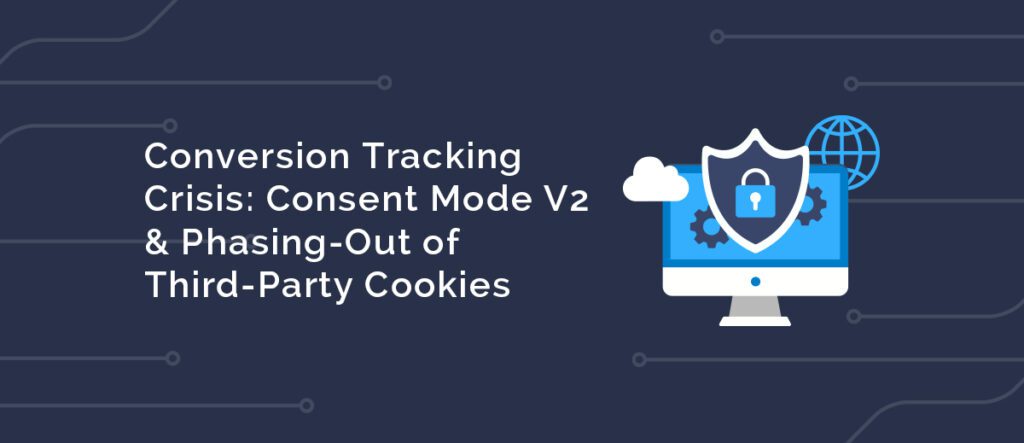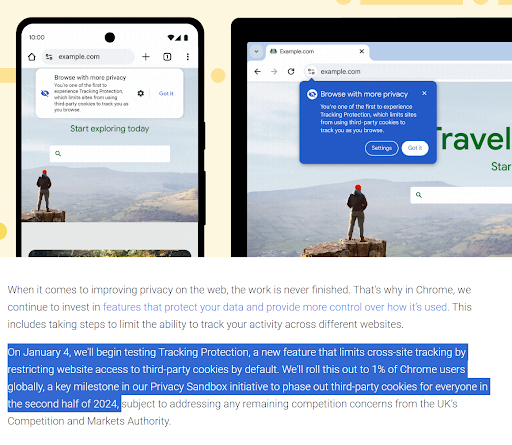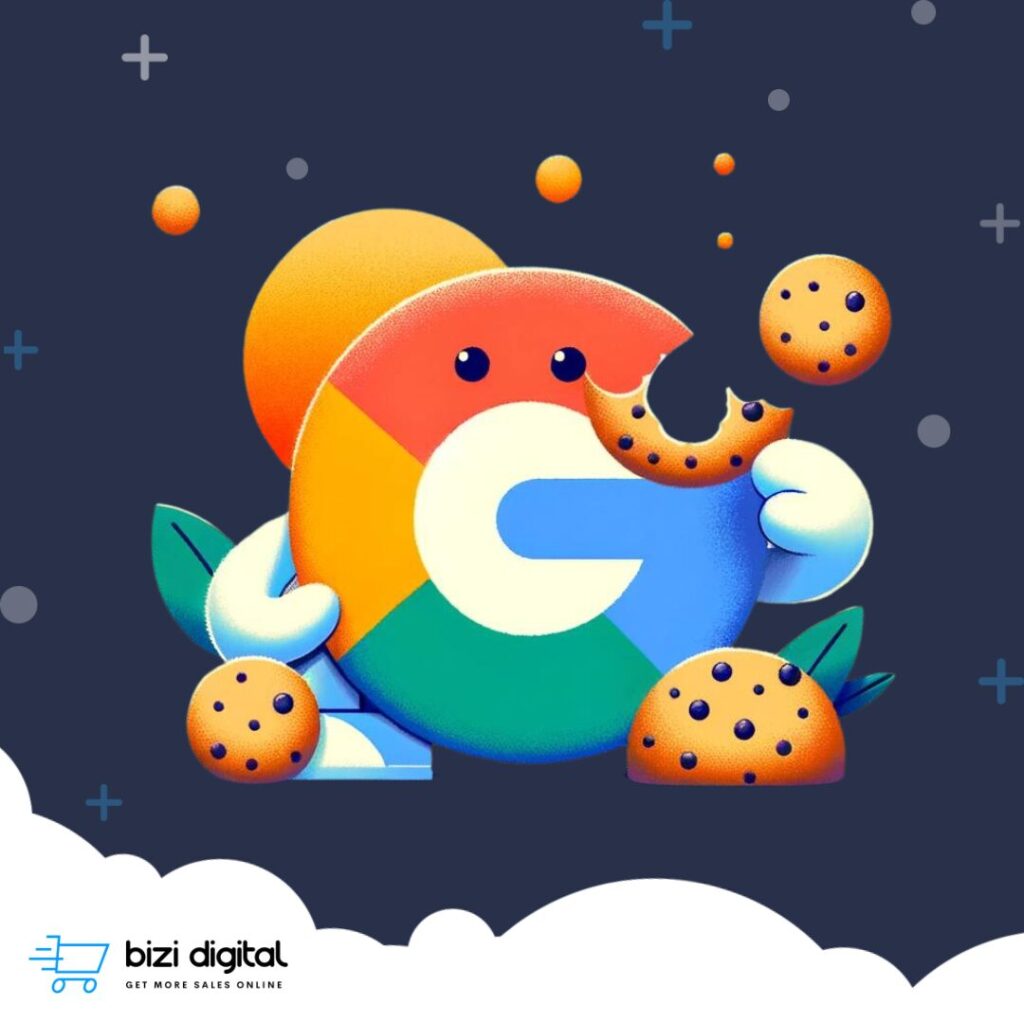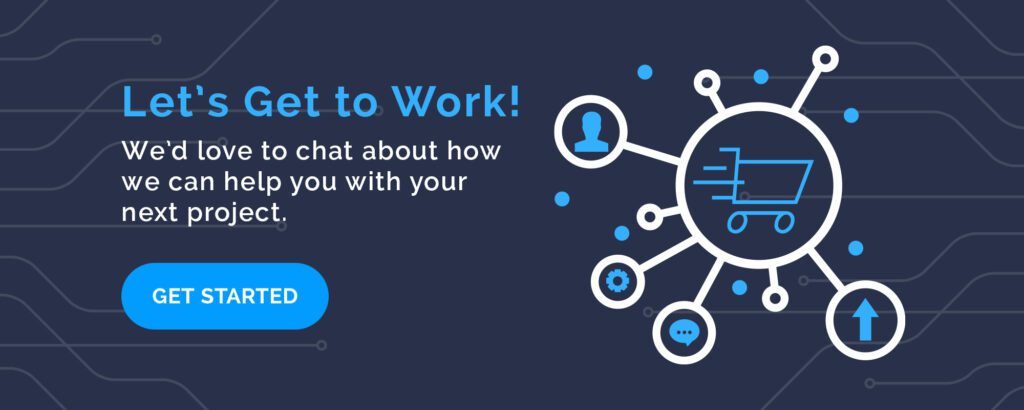
Editor’s Note (July 2024): Since the publication of this article, Google has reversed its decision to phase out third-party cookies in Chrome. This means third-party cookies will continue to be used until further notice, with new privacy controls allowing users to manage their preferences. For more details on this development and its implications, please refer to the latest updates on our blog: https://bizidigital.com/third-party-cookie-phaseout-abandoned-google-news
In the dynamic world of digital advertising, we’re at the brink of major changes that need our focus and quick action.
The two pivotal shifts we’re facing are:
- The phasing out of third-party cookies, fundamentally altering our approach to tracking and personalisation.
- The mandatory implementation of Consent Mode V2 by March 2024 across the European Economic Area (EEA), reshaping our user consent and data processing strategies.
These key developments signal a move towards more privacy-centric advertising practices, challenging us to innovate and adapt our strategies accordingly.
In this blog post, we’ll break down what these big updates mean for us in digital ads and show you ways to stay on top of your game. Let’s look into these changes in and explore how they affect digital ad strategies and conversion tracking.
Understanding the Phase-Out of Third-Party Cookies

Let’s start with a significant change in online advertising and conversion tracking: Google’s plan to phase out third-party cookies in Chrome by the second half of 2024. They’ve started testing this with 1% of users from January 4th. Third-party cookies have been essential for creating personalised ads by tracking user behaviour across different sites. This shift is mainly about improving privacy, so we must adapt our strategies to reach our audience effectively.
(Source: https://blog.google/products/chrome/privacy-sandbox-tracking-protection/ )
What are third-party cookies, and what is their role in digital advertising?
Simply put, third-party cookies are small text files (or cookie crumbs :)) that websites you visit place on your computer, but they’re created by a website different from the one you’re currently on. For example, a cookie from an advertiser on the website you’re visiting. They help advertisers track your online activity across different sites to show targeted ads matching your interests.
For years, third-party cookies have been the cornerstone of digital advertising, allowing us to track user behaviour across sites for more targeted campaigns. However, their time is running out.
What does the phase-out of Third Party Cookies mean for conversion tracking and targeting
The phase-out of third-party cookies marks a big shift in how we track and target ads online. Advertisers will need new ways to understand user preferences and behaviour without these cookies, making it harder to show personalised ads. This change challenges marketers to find alternative methods for gathering insights and measuring the effectiveness of their campaigns, emphasising the need for innovation and adaptation in the digital advertising industry.
This move reflects broader industry and regulatory trends towards prioritising user privacy and seeking alternative ad targeting and personalisation methods.
With third-party cookies going away, Google introduces tools like the Privacy Sandbox and Protected Audience API. These tools help advertisers reach their audience while respecting privacy, without relying on third-party cookies.
Navigating Consent Mode V2 Requirements
Let’s now look into Google’s Consent Mode V2, a tool that helps us navigate the complexities of user privacy while still gathering valuable insights for our campaigns.

By March 2024, organisations using Google Ads, Google Analytics, and Google Marketing Platform will need to review and adjust their consent acquisition and signalling processes to continue running personalised advertising. Non-compliance will result in the inability to utilise ad personalisation features. Implementing a Google-certified Consent Management Platform (CMP) and integrating it with the latest version of Google Consent Mode is essential for signaling user consent to Google’s platforms effectively. This adaptation not only complies with legal requirements but also aligns with Google’s EU User Consent Policy, ensuring that ad campaigns and analytics maintain their effectiveness by respecting user consent choices.
You can find a list of CMP Partners, here.
What is Google Consent Mode V2?
Google Consent Mode V2 is a tool designed to help us navigate the shifting landscape of user privacy while still allowing us to gather valuable insights for our campaigns. In essence, it strikes a balance between respecting user privacy and ensuring that we can continue to optimise our advertising efforts effectively.
In simple terms, Consent Mode V2 assists us in adjusting how our tracking functions based on user consent preferences. This means that we can collect data more transparently and ethically while complying with privacy regulations. It’s like having a trusted guardian for your data collection practices, ensuring that we’re on the right side of user privacy.
According to Google’s research, a whopping 89% of internet users would trust brands more if they invested in privacy-safe technologies. So, as we explore Consent Mode V2 further, keep in mind that it’s not just a tool; it’s a crucial aspect of building trust with your audience and adapting to the changing digital landscape.
Set up Google Consent Mode in 3 easy steps
Adapting to these new requirements might seem daunting, but by taking crucial steps towards compliance, we can safeguard our advertising efforts and respect our users’ privacy preferences. Consent Mode V2 is crucial for your success with Google Ads in 2024 and beyond. Make sure you implement it BEFORE MARCH 2024.
Step 1: Integration with Consent Management Platform (CMP)
The first step in setting up Google Consent Mode is to integrate it with a Consent Management Platform (CMP). A CMP helps you manage and communicate user consent effectively. Google has partnered with various CMPs to simplify this process. Choose a CMP that suits your needs, integrate it into your website, and ensure it’s compatible with Google Consent Mode V2.
Step 2: Enable Consent Mode in Your Google Ads Tags
Once you’ve integrated a CMP, it’s time to enable Consent Mode within your Google Ads tags. Google provides detailed instructions on how to do this. Essentially, you’ll need to adjust your tags to respond to the consent status provided by the CMP. This step ensures that your tracking and ad personalisation align with user preferences while maintaining compliance with privacy regulations.
Step 3: Test and Monitor Your Setup
After integrating a CMP and enabling Consent Mode, it’s essential to thoroughly test your setup. Ensure that data collection and ad personalisation are functioning as intended based on user consent. Regularly monitor your setup to address any issues that may arise and make necessary adjustments to maintain compliance.
By following these three easy steps, you can set up Google Consent Mode V2 and adapt to the evolving digital advertising landscape while respecting user privacy preferences.
Strategies for obtaining and managing user consent under the new regulations.
Transparent Consent Requests: Make sure your consent requests are clear, concise, and easy to understand for users. Provide detailed information about the data you’re collecting, how it will be used, and whom it will be shared with. Transparency builds trust, and users are more likely to provide consent when they understand the implications.
Granular Consent Options: Offer users granular control over their data preferences. Allow them to choose which data types they are comfortable sharing and for what purposes. This approach respects user autonomy and privacy, increasing the likelihood of obtaining meaningful consent.
User-Friendly Consent Management: Implement user-friendly consent management tools on your website or app. This allows users to review and change their consent settings easily. Make it as simple as possible for users to withdraw or update their preferences at any time, ensuring ongoing compliance with their wishes.
These strategies help you comply with new regulations and build a positive relationship with your audience by demonstrating your commitment to privacy and user choice.
Editor’s Note (July 2024): Due to the recent decision by Google to reverse the phase out of third-party cookies in Chrome, we have updated our strategies in a new blog post. For more details on this development and its implications, please refer to the latest updates on our blog: https://bizidigital.com/third-party-cookie-phaseout-abandoned-google-news
The Future of Google Ads in a Cookieless World
The outlook is promising for those willing to innovate and leverage first-party data and new tracking technologies, ensuring our campaigns remain effective and relevant.
Innovations and strategies for conversion tracking without third-party cookies.
Moving forward with Google Ads in a world without third-party cookies requires us to adjust and find new approaches. A key element of this transformation is the strategic use of first-party data and alternative tracking methods.

First-party data, sourced directly from your audience, becomes invaluable in understanding user behaviours and preferences. By harnessing this data, you can craft personalised campaigns that resonate with your audience while respecting their privacy.
Additionally, embracing alternative tracking methods, such as contextual advertising and cohort-based targeting, allows you to maintain the relevance and effectiveness of your campaigns.
These innovations ensure that your advertising efforts remain on the cutting edge, delivering results in a cookieless world.
Plus, keeping up with Google’s latest offerings, like the Privacy Sandbox and Protected Audience API, provides new avenues for respecting user privacy while effectively targeting audiences, aligning with the shift towards more privacy-focused advertising strategies.
These Google initiatives are designed to provide new methods for audience targeting and ad personalisation in a way that respects user privacy, which becomes crucial as third-party cookies are phased out. Integrating these into your strategies can help maintain effective advertising in the evolving digital landscape.
For an in-depth exploration of these tools and their impact on digital advertising, consider referring to this article on Search Engine Journal.
Radhika Mani, Google Display Ads’ Senior Product Manager, aptly reminds us,
“In a future without third-party cookies, marketers will need to adopt more durable audience strategies.”
this statement underscores the importance of leveraging first-party data and exploring alternative tracking techniques to thrive in the evolving landscape of digital advertising.
Conclusion: Confronting the Conversion Tracking Crisis
These challenges of conversion tracking and user consent demand immediate attention. With the phasing out of third-party cookies and the mandatory adoption of Google Consent Mode V2, marketers face a big shift that could impact their advertising effectiveness.
The stakes are high: improper tracking could cripple the algorithm, resulting in suboptimal results and inefficient budget allocation. To succeed, take action now.
→ Implement Consent Mode V2 to comply with regulations and recover lost data.
→ Ensure you turn on Enhanced Conversions to measure previously untracked conversions and optimise your campaigns.
→ And don’t forget Server-Side Tagging, a necessity in a cookieless world.
Don’t wait until the last minute; take these steps today to stay ahead of the competition and ensure your success in the ever-changing world of digital advertising.
As a leading Google Ads agency, we prioritise staying ahead of new regulations and updates. We want you to stay informed, too. Follow our Social Media accounts to ensure you never miss important updates.
If you would like to work with us and take full advantage of our expertise in navigating the ever-changing Google Ads landscape, don’t hesitate to reach out. We’re here to help you achieve your digital advertising goals.

